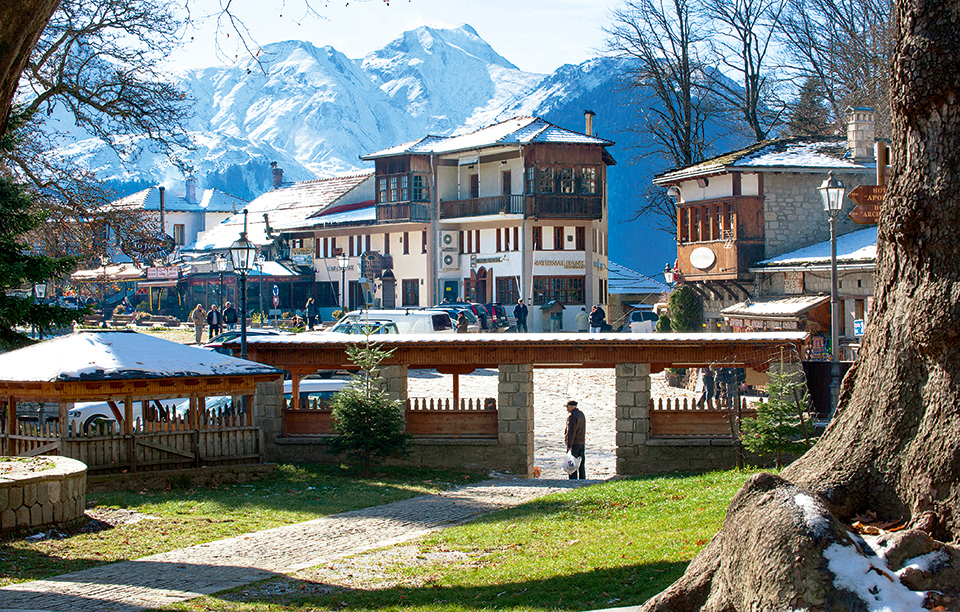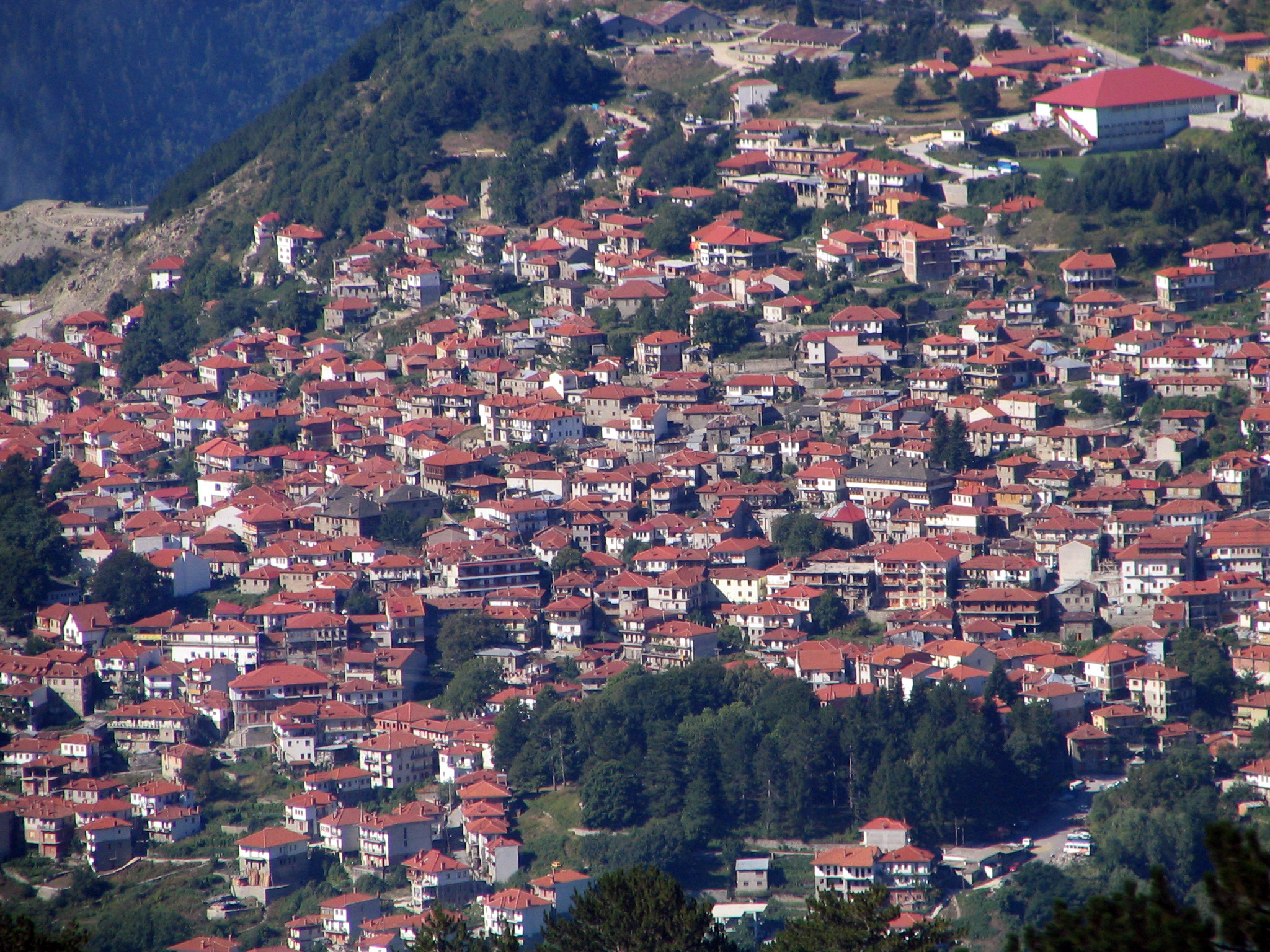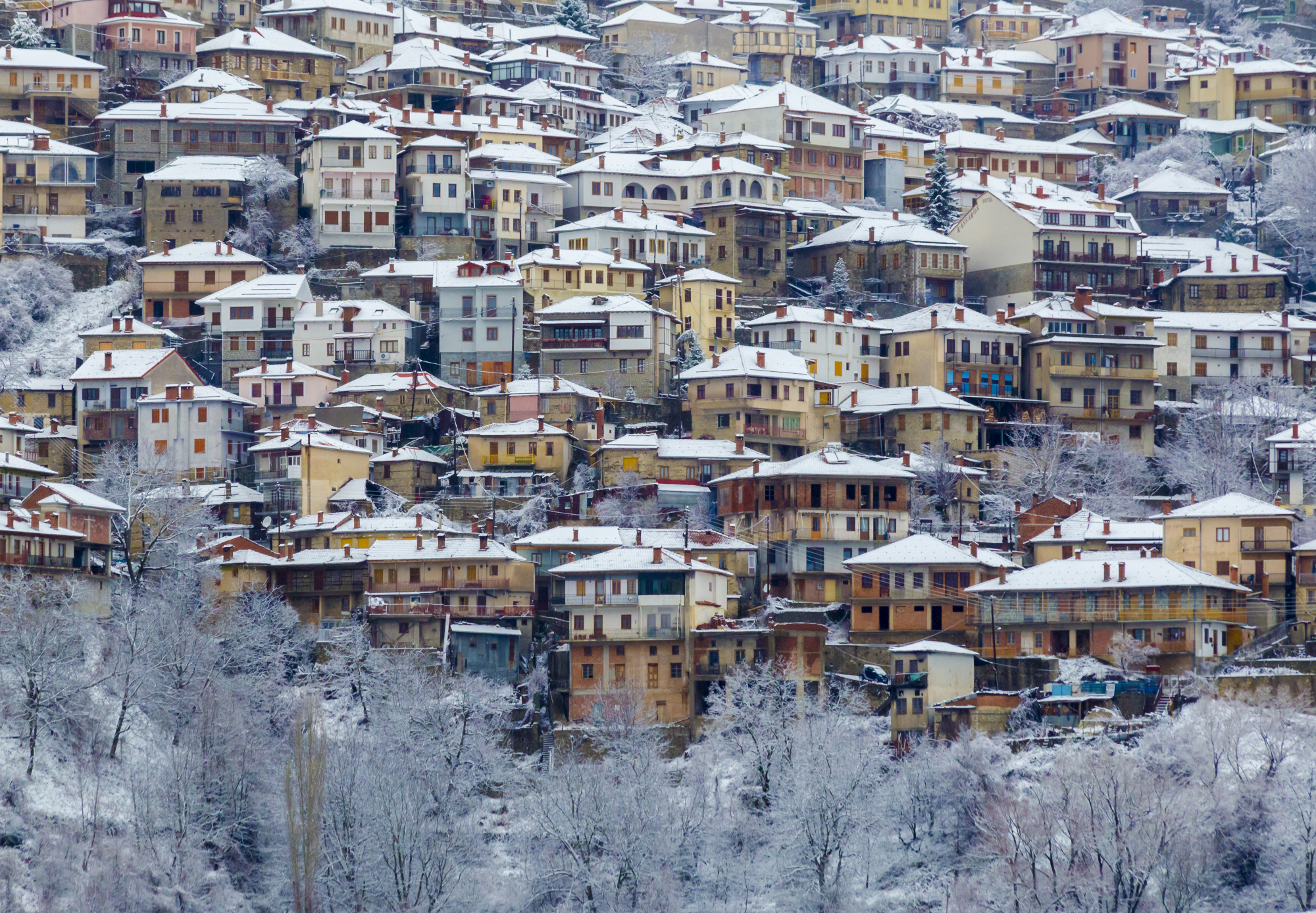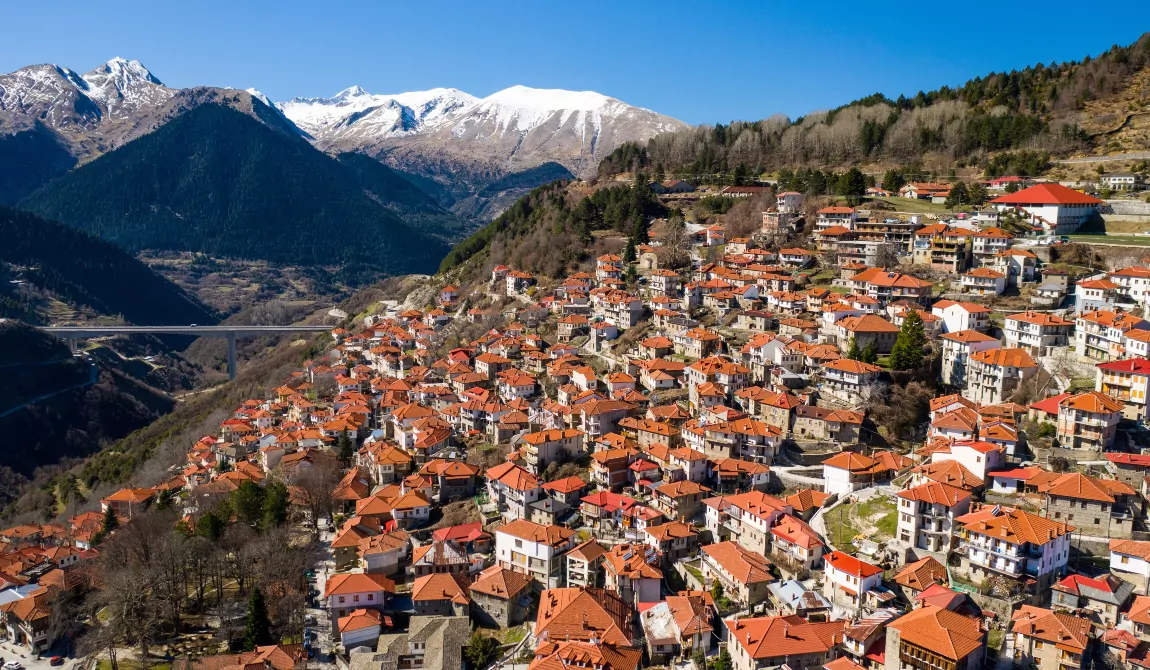Metsovo is one of those places that adore September and October. As the Pindus forests turn amber and ruby, the stone-built village comes alive like a stage set: wooden balconies, chimneys puffing smoke, cobbled lanes glistening with morning dew. In the square, under the plane trees, elders sip coffee brewed in hot sand and trade stories; passers-by stop for a photo and end up staying the whole day.
History and identity
Perched at about 1,160 meters, Metsovo has for centuries been a mountain pass and trading crossroads. Its Aromanian (Vlach) heritage shaped a distinctive way of life—from weaving and woodcarving to music and feasts. Great benefactors took root here and left a lasting mark through public works and culture. The name of Evangelos Averoff-Tositsas stands out across foundations, schools, museums and cultural venues that keep the local legacy alive. As you walk the neighborhoods, stone fountains with inscriptions, old courtyards and carved wooden benches in the mansions remind you that time flows here with reverence.

Culture with substance
Start at the Tositsa Folklore Museum, a mansion-turned-time capsule of Epirus daily life: textiles, utensils, arms, rare furniture and crafts. A few steps away, the Averoff Gallery—with representative works of modern Greek painting—turns the mountain village into a compact “city museum.” On the fir-covered hill, the Monastery of Agios Nikolaos offers quiet air and stone architecture with old frescoes.
Nature that smells like autumn
Around Metsovo, routes unfold for every pace. The artificial Aoos Springs Reservoir, a short drive away, mirrors autumn colors and rewards easy lakeside strolls. The signposted Ursa Trail footpaths start in the village and climb into beech and fir forests; family-friendly loops sit alongside demanding mountain routes for the initiated. On the Politses plateau, the horizon opens wide and grazing meadows change palette each afternoon, while in the mornings a veil of mist unrolls over the ridgelines.
Flavors that make history
Metsovo has forged its own culinary school. Local cheeses—smoked metsovone, mild yet characterful metsovella, and robust graviera—meet Epirote butter, fresh wild mushrooms and rustic breads. Tavern grills around the square sizzle with mutton and kontosouvli, slow-cooked casseroles and seasonal game. Pies are serious business: greens pies, plastos (corn-and-greens pie) and flaky village-style pastries that crackle. A glass of high-altitude red ties the flavors together, while for dessert, thick yogurt with honey or spoon sweets keep tradition alive.

The hangouts you’ll want to linger in
In the main square, cafés under the plane trees are the village’s living lounge: coffee in hot sand early in the morning, then tsipouro with meze at dusk as the first fireplaces are lit. For oenotourism, Katogi Averoff opens its cellar with tours, tastings and stories of how vines thrive on the edge of the Pindus; the space doubles as an atmospheric wine bar—perfect for a paximadi with local cheese and a glass of red. If you’re after an authentic lunch, follow the scent of charcoal: the tavernas around the square serve grilled smoked metsovone, juicy meats and butter-tossed mushrooms. For something sweet, village patisseries honor syrup and walnuts, while an old-school coffee roastery with millstones will prep blends to take home.
Stays with atmosphere
Guesthouse-mansions in the center offer wood-clad rooms, woolen blankets and rooftops in view, with breakfasts perfumed by butter and mountain honey. On the village’s edge, hotels with broad verandas look out to the firs and the valley; on cold nights the wind whispers and the fireplace becomes the meeting point. Wine lovers can sleep beside the winery and wake to the aroma of aging barrels.

Small practicals that make a big difference
Autumn light peaks in early afternoon; that’s when the square and cobbles “write” best in photos. Pack a second layer and a light rain jacket—weather turns quickly after five. For an easy outing, the Aoos Springs Reservoir is ideal for a picnic—leave no trace and stick to the paths. Access is straightforward via the Egnatia Odos; a few winding minutes into the Pindus and you’re in the village’s embrace.
Metsovo isn’t just a “pretty destination.” It’s a living organism that blends culture, nature and flavor—a place that teaches you to slow down. Each autumn, as the trees change color and conversations in the cafés deepen, you feel you’ve found a small capital of mountain Greece: warm, genuine, unpretentious.



